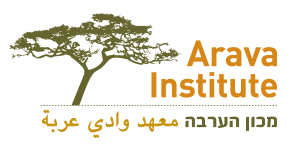The New Normal?
Pre-State Zionists believed that the goal of the establishment of the Jewish State was not only to provide a safe haven for Jews threatened by anti-Semitism around the world, but that the new state would also enable a normalization of the Jewish people: “A Jewish state would only be a normal country if Jewish street-cleaners and gardeners worked in the same cities as Jewish doctors, lawyers, and businessmen, and when Jewish policemen arrested Jewish prostitutes.” (Mik Moore, Jewish Student Press). After the establishment of the State of Israel, Jews and Israelis continued to struggle with the question of normalcy. In 1980, Israeli author, A.B. Yehoshua wrote a book entitled “The Right to Normalcy” which discussed many of the abnormalities of the State of Israel inherent in its creation. The two month war with Gaza has spurred Israeli society to once again struggle with the question of what is normal and whether or not normalcy is even the goal. Is the normal state of Israel to be in constant military conflict with its neighbors or do we have different expectations for the future of the Middle East? Is Israel’s behavior to be judged against the normal behavior of other countries around the world during times of conflict or do we hold ourselves to a higher standard?
Israelis are not the only ones who struggle with this question of “normalcy”. Palestinians are concerned that the world and their own society will accept occupation and statelessness as the norm. Those Palestinians who try to reach out across the political divide to Israelis in order to cooperate and try to build a different future for the Middle East, are often accused of being “normalizers”, referring to an acceptance of Israel’s control over Palestinians as a normal state of affairs.
There is nothing normal about a father saying kadish (the Jewish prayer for the deceased) over his 4 year old son’s grave. There is nothing normal about children killed by an airstrike while playing on a beach in Gaza. Those of us who are struggling to reach out to the other side in order to create a new Middle East, one different from the one shown nightly on CNN, are not doing so because we accept this reality as normal, but because we are struggling to change it.
Last month’s blog was dedicated to alumni reflections on the war and their experience at the Arava Institute, especially in the Peace Building and Environmental Leadership Seminar. With the advent of a tenuous cease-fire between Israel and Gaza, we dedicate this month’s Director’s Blog to getting back to normal; to welcoming our new staff and to the opening of a new semester. Once again, the Arava Institute will be hosting a group of Palestinian, Israeli, Jordanian and international students for the fall semester. We are expecting to welcome 4 Palestinians and 5 Jordanians students for classes starting September 9th. Among the Israeli students is a student from the Gaza border community who received a special scholarship to come and among the international students, is our first student from Morocco!
Getting back to normal life, however, does not mean that we accept the ongoing conflict between Israelis and Palestinians as the “new normal.” As Israelis mourn the loss of their loved ones and try to recover from the disruption of their daily lives, and as Palestinians in Gaza bury their dead and try to rebuild their devastated communities, I expect my government to genuinely work towards a just and lasting peace with the Palestinians and I expect the Palestinians to make the same demand of their leaders.
In this month’s blog, you will meet a group of new staff members who have joined the Arava Institute over the summer. We are also proud to use this month’s blog to showcase a generous gift of 4 drawings donated to the Arava Institute by our friend Rita Blitt.
David Lehrer
Shimri Negbi, Program Associate (Student Counselor)
Shimri Negbi from Jerusalem, is nearly finished with his Bachelor’s Degree in Politics and Governments and Middle Eastern Studies at Ben Gurion 
Kate Cohen, Program Associate
Kate Cohen first came to the Arava Institute as a student in the fall semester of 2007 and then went on to earn her Bachelor’s Degree in Public Policy at Mills College of 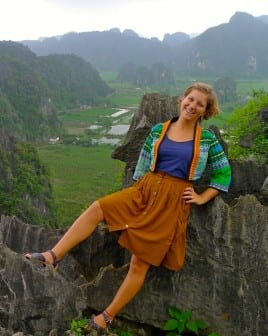
Zobida Ezery, Program Associate and Researcher
Zobida Ezery is from Acco and studied at the Arava Institute in the Spring of 2013. She earned her bachelor’s degree and technical certification in environmental studies at the Tsfat campus of Bar Ilan University and then began a 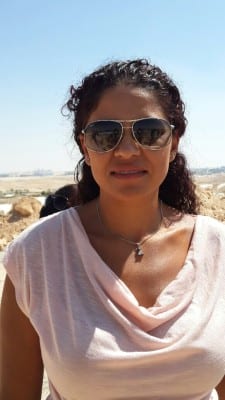
Tal Holzman, Research and Visitor’s Park Manager
Tal Holzman, originally from Kiryat Ata near Haifa, moved to southern Israel after completing her first degree in Art and Archaeology at Hebrew University. She then earned her Master’s Degree in the Joint Arava Insitute and Ben-Gurion University Masters program at Sde Boker, focusing on settlement distribution 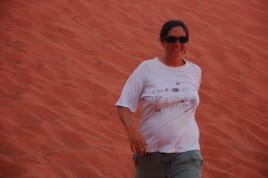
Igal Yachya, Information Technology (IT) Manager
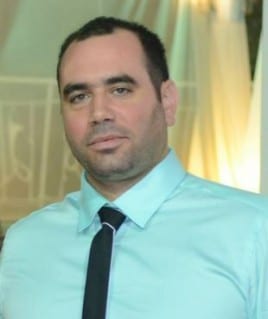

Rita Blitt is an international, award winning artist from the US who has generously donated four of her drawings to the Arava Institute www.ritablitt.com. Rita is a painter, sculptor, and filmmaker whose work has been exhibited in museums, galleries, private collections and public locations all over the world — Australia, Canada, France, Germany, Italy, Israel, Japan, Singapore, Taiwan, Uganda, the United States, and soon China. Rita utilizes a wide variety of media including paint, pastel, acrylic, metal,

